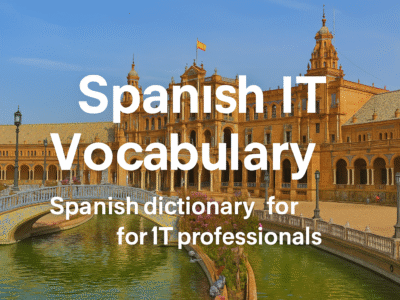No-Code Automation Mastery: Build Integrations, Accelerate Revenue, and Reclaim Your Time—No Programming Required
This course is designed for a new generation of builders—product managers, project managers, marketers, founders, operations leads, analysts, and anyone eager to connect the dots between apps, data, and business growth. If you have ever wished for more hours in …
Overview
This course is designed for a new generation of builders—product managers, project managers, marketers, founders, operations leads, analysts, and anyone eager to connect the dots between apps, data, and business growth. If you have ever wished for more hours in the day or found yourself groaning at repetitive tasks, this course will turn you into a no-code automation superhero.
Who Is This Course For?
Whether you’re orchestrating a product launch, optimizing marketing funnels, handling customer operations, or simply drowning in manual spreadsheet updates, this program is crafted for you. No programming experience? No problem. If you can explain a process, you can automate it. The course is especially invaluable for:
- Product and project managers aiming to accelerate feature delivery and reduce operational drag
- Marketers seeking to automate lead flows, reporting, and campaign triggers
- Founders and operations leads wanting to scale without hiring armies of IT staff
- Analysts tired of copy-pasting data and hungry for real-time insights
- Anyone who wants to reclaim hours, reduce errors, and eliminate bottlenecks—without writing code
What Will You Learn?
This isn’t just a tour of tools; it’s a practical, hands-on journey into the “why,” “when,” and “how” of no-code automation. Across 56 focused lessons, you will:
- Map your real-world business pain points to high-impact automation opportunities—no more wasted effort on trivial use cases.
- Compare and select the right platforms (n8n, Make, Zapier, Pipedream, Tray.io, Unito, Parabola) based on workflow complexity, budget, compliance needs, and scalability.
- Master the core architecture of automations—events, webhooks, polling, APIs, and the classic “input → process → output” model.
- Design and deploy robust end-to-end workflows that integrate forms, CRMs, e-commerce, marketing stacks, and warehouses—turning scattered data into streamlined processes.
- Embed AI modules (OpenAI, Gemini, Claude, Microsoft Copilot, Vertex AI) to generate text, classify sentiment, enrich data, and even create images—making your automations smarter, not just faster.
- Monitor, debug, secure, and scale your automations with production-level reliability, including logging, error handling, backup strategies, and compliance essentials (GDPR, SOC 2, CCPA).
- Leverage a ready-made library of 30+ plug-and-play automation recipes, cost calculators, and a prompt library for immediate ROI.
What’s in It for You?
- Immediate wins: Import and activate 30+ workflow recipes compatible with n8n and Make. These aren’t theoretical—they’re ready to run and drive real results from day one.
- Decision frameworks: Tool selection guides, API quota planners, and cost calculators that demystify vendor pricing and help you avoid budget surprises.
- AI automation: A curated prompt library and step-by-step blueprints for AI-powered scenarios from lead enrichment to contract summarization.
- Scale and resilience: Learn to build integrations that won’t break when you triple your workload or face an audit.
- Governance and compliance: Essentials for handling sensitive data, managing access, and satisfying regulatory requirements without sleepless nights.
- Culture of automation: Learn how to evangelize automation within your team, measure ROI, and make your wins visible to leadership—fueling a virtuous cycle of improvement.
Why Take This Course?
- It’s practical: You’ll finish with a deploy-ready library of automations and a tested decision-making framework.
- It’s comprehensive: From foundational principles to AI integrations and regulatory compliance, no stone is left unturned.
- It’s empowering: You’ll gain the skills, confidence, and resources to automate and optimize any repetitive business process—starting immediately.
If you’re ready to accelerate revenue, shrink operational costs, and reclaim your time—without waiting on developers—this course is your fast track. Be warned: once you start automating, you may never look at “busywork” the same way again.
Curriculum
- 9 Sections
- 55 Lessons
- Lifetime
- 1. Foundations of No-Code Automation8
- 1.1DTZS 1.1 What can and cannot be automated without developers
- 1.2DTZS 1.2 The modern integration landscape (iPaaS, open-source, SaaS)
- 1.3DTZS 1.3 Events, webhooks, polling, and API fundamentals in plain English
- 1.4DTZS 1.4 “Input → Process → Output” architecture for business workflows
- 1.5DTZS 1.5 Finding bottlenecks: value-stream mapping for office work
- 1.6DTZS 1.6 Estimating ROI and building the business case
- 1.7DTZS 1.7 Cloud versus self-host: security, latency, and Total Cost of Ownership
- 1.101DTZS 1. Quiz3 Questions
- 2. n8n: Open-Source Backbone8
- 2.1DTZS 2.1 Interface tour and node taxonomy
- 2.2DTZS 2.2 Spinning up your first workflow in five minutes
- 2.3DTZS 2.3 Credentials, environment variables, and secrets management
- 2.4DTZS 2.4 Core logic nodes: HTTP Request, IF, Switch, Merge, Code
- 2.5DTZS 2.5 Integrating Slack, HubSpot, Airtable, Shopify, and GitHub
- 2.6DTZS 2.6 Debugging with execution logs, mock data, manual runs
- 2.7DTZS 2.7 Scaling with queues, separate workers, and Redis
- 2.101DTZS 2. Quiz3 Questions
- 3. Make and Zapier: Cloud Powerhouses8
- 3.1DTZS 3.1 Scenario vs. Zap: terminology, limits, pricing patterns
- 3.2DTZS 3.2 Building multi-step paths with routers, iterators, and aggregators
- 3.3DTZS 3.3 Error handling: retries, timeouts, conditional branching
- 3.4DTZS 3.4 Connecting Google Workspace, Notion, Stripe, and Facebook Ads
- 3.5DTZS 3.5 Using built-in functions to transform dates, arrays, text
- 3.6DTZS 3.6 Versioning and test-mode best practices
- 3.7DTZS 3.7 Migrating between platforms with Blueprint/Export files
- 3.101DTZS 3. Quiz3 Questions
- 4. Orchestration with Pipedream, Tray.io, and Parabola8
- 4.1DTZS 4.1 When to choose event-driven serverless (Pipedream) over GUI workflows
- 4.2DTZS 4.2 Building data pipelines and CSV automation in Parabola
- 4.3DTZS 4.3 Enterprise-grade connectors and mapping in Tray.io
- 4.4DTZS 4.4 Real-time webhooks, cron triggers, and queue workers
- 4.5DTZS 4.5 Embedding custom code steps (JavaScript, Python) safely
- 4.6DTZS 4.6 Observability: logs, metrics, and alerting integrations
- 4.7DTZS 4.7 Hybrid architectures that mix multiple iPaaS tools
- 4.101DTZS 4. Quiz3 Questions
- 5. AI Modules and LLM Assistants8
- 5.1DTZS 5.1 Overview of accessible LLM APIs in North America and Europe
- 5.2DTZS 5.2 Prompt-engineering for deterministic outputs and JSON formats
- 5.3DTZS 5.3 Generating personalized emails from CRM data
- 5.4DTZS 5.4 Classifying reviews and support tickets by sentiment and topic
- 5.5DTZS 5.5 Summarizing contracts and meeting transcripts on the fly
- 5.6DTZS 5.6 Creating product images with generative AI and storing in CDN
- 5.7DTZS 5.7 Designing fallback strategies for quota limits and outages
- 5.101DTZS 5. Quiz3 Questions
- 6. Thirty Ready-Made Automation Recipes7
- 6.1DTZS 6.1 Web form submission → Salesforce lead → Slack alert
- 6.2DTZS 6.2 Stripe payment → QuickBooks invoice → customer thank-you email
- 6.3DTZS 6.3 Shopify order → OpenAI shipping-update copy → Mailchimp campaign
- 6.4DTZS 6.4 Google Sheets row → enrichment via Clearbit → HubSpot deal
- 6.5DTZS 6.5 Zendesk ticket → sentiment analysis → route to priority queue
- 6.6DTZS 6.6–6.30 More advanced and industry-specific recipes up to: Closed-won deal → generate PDF contract → e-sign → cloud archive
- 6.101DTZS 6. Quiz3 Questions
- 7. Governance, Security, and Compliance8
- 7.1DTZS 7.1 Data residency, GDPR, CCPA, and SOC 2 basics for no-code builders
- 7.2DTZS 7.2 Role-based access, secrets vaults, and API key rotation
- 7.3DTZS 7.3 Version control and staging environments for workflows
- 7.4DTZS 7.4 Logging, audit trails, and immutable evidence for regulators
- 7.5DTZS 7.5 Disaster recovery: backup, restore, and high availability
- 7.6DTZS 7.6 Design patterns that avoid “spaghetti integrations”
- 7.7DTZS 7.7 Scaling to thousands of tasks per minute without breaking SLAs
- 7.101DTZS 7. Quiz3 Questions
- 8. ROI, Scaling, and Automation Culture8
- 8.1DTZS 8.1 Measuring success: throughput, error rate, cost per task
- 8.2DTZS 8.2 Building an internal “automation backlog” and intake form
- 8.3DTZS 8.3 Coaching teams to document before they automate
- 8.4DTZS 8.4 Center-of-Excellence model versus federated ownership
- 8.5DTZS 8.5 Continuous improvement loops and quarterly audits
- 8.6DTZS 8.6 Presenting wins to leadership with data-driven storytelling
- 8.7DTZS 8.7 Road-mapping future initiatives: AI agents, RPA, and beyond
- 8.101DTZS 8. Quiz3 Questions
- DTZS FinalQuiz1










